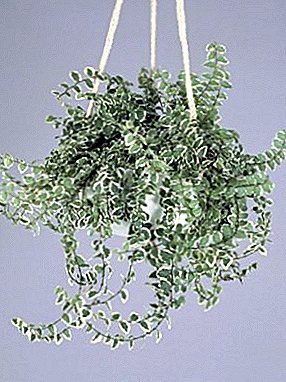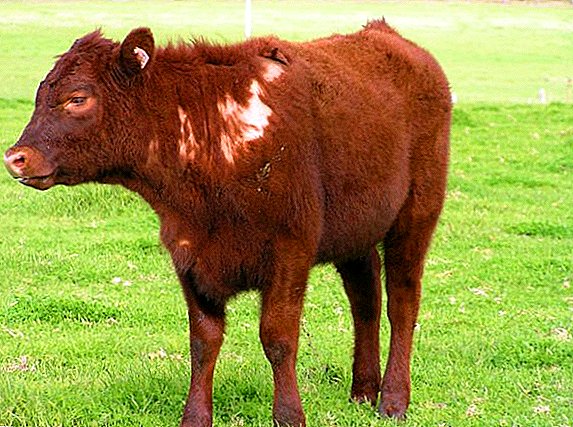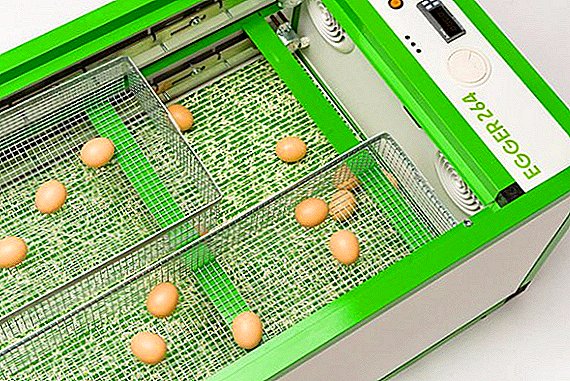 Every serious poultry farmer sooner or later faces the need to purchase an incubator. One of the well-proven devices is called Egger 264. In this article we consider the characteristics of this device, its advantages and disadvantages.
Every serious poultry farmer sooner or later faces the need to purchase an incubator. One of the well-proven devices is called Egger 264. In this article we consider the characteristics of this device, its advantages and disadvantages.
Description
The Farmer Technology Russian-made incubator is designed for breeding offspring of poultry. The device is fully automated, equipped with high-quality electronics and, among other things, easy to use. The cabinet unit is designed for large farms, but despite this, it is compact and can be used in small spaces.  The professional device for breeding birds offspring is equipped with all the necessary systems and functions for a successful outcome. The manufacturer guarantees the high quality of all materials and components used in the production, accurate operation of all instrument systems and long-term service.
The professional device for breeding birds offspring is equipped with all the necessary systems and functions for a successful outcome. The manufacturer guarantees the high quality of all materials and components used in the production, accurate operation of all instrument systems and long-term service.
Did you know? The first ever incubators for breeding poultry were used in ancient Egypt. The heads of the economy were exclusively priests. These were special rooms, where pots made of special clay with thick walls acted as trays. And they were warmed up, brought to the desired temperature, with the help of burning straw.
Specifications
Device Parameters:
- case material - aluminum;
- design - a case for a conclusion and a two-tier incubator;
- dimensions - 106x50x60 cm;
- power - 270 W;
- 220 volt mains supply.
It will be interesting to know how to make the incubator device out of the fridge yourself.
Production characteristics
The device package includes twelve trays and two output nets, the capacity of the eggs:
- chickens -264;
- ducks - 216 pcs .;
- goose - 96 pcs .;
- turkey - 216;
- quail - 612 pcs.

Did you know? The first European device for hatching eggs was invented by the French scientist Port in the eighteenth century, for which he almost paid with his life, pursued by the holy Inquisition. His apparatus was burned as a devilish invention.
Incubator Functionality
Egger 264 is fully automated, which makes it easy to navigate its functions, even for a beginner. The device using the inverter can be switched to battery operation. We will understand the automation of the device:
- temperature - the one that was set is automatically supported; the sensor accuracy is 0.1 °. The control provides a heater with low inertia of operation;
- air circulation - provided by two fans, the air flow occurs through an adjustable hole. Before getting into the incubation chamber, the air flow has time to warm up. Blowing out the exhaust air occurs at intervals of an hour, for several minutes;
- humidity - maintained automatically in the range of 40-75%, built-in fan for blowing and discharge of excess moisture or elevated temperature. The set includes a nine-liter bath for water, the volume is enough for up to four days of work.
 All the necessary modes are set at the beginning of the work, with the slightest deviation the emergency mode is activated. You can watch the accuracy of the mode support on the same display. The contents of the incubator can be observed through the upper window.
All the necessary modes are set at the beginning of the work, with the slightest deviation the emergency mode is activated. You can watch the accuracy of the mode support on the same display. The contents of the incubator can be observed through the upper window.Advantages and disadvantages
Among the advantages of the device note the following:
- two-in-one convenience;
- process automation;
- availability of emergency mode;
- ease of use;
- the amount of material loaded.
The following deficiencies were noted:
- mechanical parts quickly fail;
- the trays are turning too slowly.
Learn how to choose the right incubator for your home.
Instructions for the use of equipment
The device is configured using the menu buttons on the front cover; all parameters are displayed on the display window. Before laying the eggs, fill the bath with water and perform a test to check the equipment.
Important! Before turning on, you need to make sure that the device is standing on a flat surface and is not loose.
Egg laying
The trays are made of durable and resistant to deformation of plastic, each contains 22 eggs. The eggs tested with an ovoskop are loaded into trays with a pointed end down. Then check the temperature mode, during the bookmark, it can go down, but the machine will align it. 
Incubation
The process lasts twenty one days. During this time you need:
- check the temperature daily, adjust if necessary on the controller;
- air mechanically twice a day, opening the lid for several minutes;
- When automating the turning of trays, it is difficult to detect possible damage to the eggs, so it is necessary from time to time to inspect the eggs visually and through the ovoscope.
Important! Three days before the chicks are pecked, the turning mechanism is turned off, the moisture regime is increased.
Hatching chicks
During the day, with normal development of eggs, all offspring should hatch. At this time, you should not tear off the cover of the apparatus; you can watch the course of hatching through the glass window in the upper part. Hatching chicks dry in the machine itself, and then dried ones are placed in a box where they are given food and drink. 
Device price
The average price of Egger 264 in different currencies:
- 27,000 rubles;
- $ 470;
- 11 000 hryvnia.
More information about such an incubator: "Blitz", "Universal-55", "Layer", "Cinderella", "Stimulus-1000", "Remil 550TsD", "Perfect hen".
findings
Feedback on the work of Egger 264 is generally positive, users are happy with the possibility of hatching different types of poultry, as well as the number of eggs that can be hatched simultaneously. Rescues emergency system, automatically correcting errors in operation. This makes it possible not to waste time on daily monitoring. In general, the advantages of an incubator are more than disadvantages.
Read about the intricacies of incubating eggs of chickens, goslings, poults, ducks, turkeys, quails.
Worthy analogues:
- "Bion" for 300 eggs;
- Nest 200;
- "Blitz Poseda M33" for 150 eggs.












